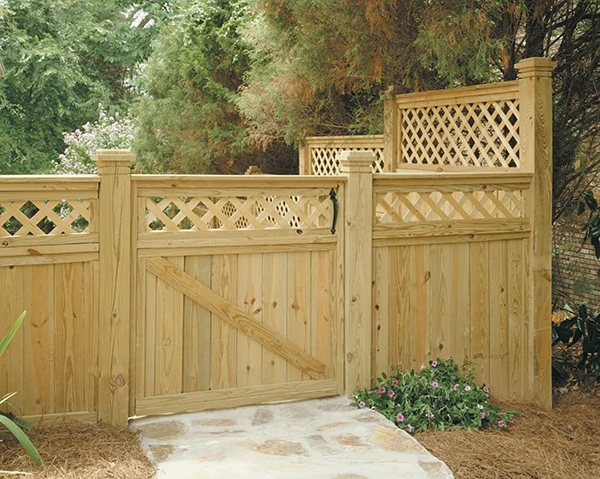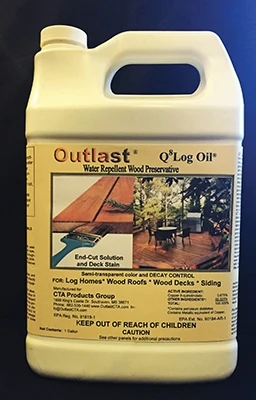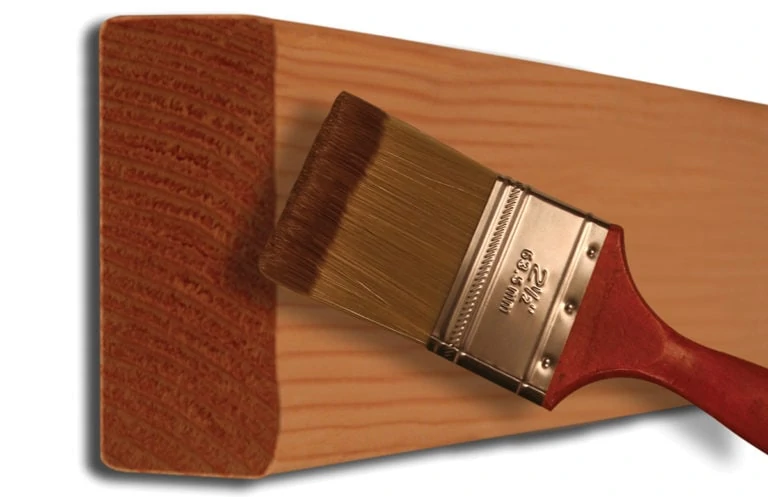Applying wood sealer to the end cuts of treated wood is more important than ever. Here’s why.
Pressure treated lumber is the most widely used building material when constructing for outdoor exposure. Ensuring its longevity is both financially and aesthetically important. Since moisture, sunlight and oxygen all work to degrade the wood, it makes application of the proper preservative coating essential to your treated lumber projects.
To protect against moisture and harmful UV rays, an effective preservative surface coating must include some type of pigment (sometimes natural in color) along with a long-term moisture barrier that still allows the wood cells to breath naturally. This type of protection is necessary in climates all around the world — from vertical walls and fences to walking surfaces (decks, docks & steps) to handrails . . . and even the fresh end-cuts made during construction.
The end cuts of treated lumber are too often overlooked during construction, but doing so can lead to problems with water damage. When dimensional lumber products are treated, they’re impregnated with a copper preservative that is forced by pressure into the wood cells, but the preservative doesn’t achieve 100-percent penetration.
“Even though lumber has been pressure treated, it is important to realize the treatment does not penetrate entirely through the wood,” says Jeff Wilson, Residential/Industrial Sales & Service Manager for Arxada, a world leader and innovator in the wood preservation industry. “So when a homeowner or contractor cuts the wood, they wind up with fresh end-cuts where the center area has less preservative than on the outer part of the wood. This is where applying a copper-based end-cut solution helps to prevent mold or decay. Sealing a project when complete is also very important to the longevity of the lumber used, but this initial coating of fresh cuts is instrumental to effective protection of a project.”
The American Wood Protection Association (AWPA) has now made this recommendation official. According to AWPA Standard M-4: “When wood is pressure-treated with preservatives, it is absorbed in varying amounts by the sapwood, but only a small amount of preservative penetrates the heartwood, juvenile wood, and some of the wood surrounding knots. Therefore, all drilled holes and cut ends need to be treated with a preservative, such as copper naphthenate or oxine copper (mostly for exterior use) or a boron-based preservative (for interior uses only).”
In fact, the cut ends of lumber absorb rot-causing water at a much greater rate than the sides or face of the board. Although treating the end cuts has been a “best practice” by responsible builders for years, it is one of aspect of construction that is likely to be forgotten by DIY’ers and less mindful construction pros. Well, pro builders and DIY’ers now have a new reason to be more diligent about preserving those end cuts: It is required by AWPA and then included in manufacturer’s warranty as best practice for long-term protection.

The International Code Council’s committees recognize AWPA as the authority on treated wood and have now referenced AWPA Standards for end-cut treatment in the International Building Code and International Residential Code in applications where preservative treated wood is required.
How does this apply to you?
If your local municipality has not already adopted the end-cut application as a requirement to meet building code, then they may do so in the future.
Whether your local authorities adopt the recommendation or not, the manufacturers of wood preservative have taken heed of the AWPA suggestion and now recommend it as a standard building practice to qualify for the lumber’s product warranty.
For example, when stipulating “Requirements for Coverage,” the Wolmanized Residential Wood Limited Warranty now reads: “Surfaces that have been cut or trimmed and other holes or damage should be treated with a wood preservative end-cut solution in accordance with the label’s directions. Acceptable wood preservatives include Outlast Q8 Log Oil or other products containing a minimum of 0.675 percent copper as oxine copper (copper-8 or copper-8-quinolinolate) or 1 percent copper as copper naphthenate.”

In other words, if you don’t coat your end cuts with a preservative—and use the correct preservative—then your treated lumber may not be covered by the manufacturer’s warranty.
“The formula of 0.675 percent copper is important,” notes Wilson. “It requires a solution strength with at least this much copper to be effective.”
The end-cut treatment can be applied by sprayer, roller or brush. (EHT recommends back-brushing a sprayed finish to work the product into the wood grain.) The treatment should be liberally applied to dry wood. Allow the treatment to dry, and then apply a second coat.
Treating the end cuts becomes an important way to protect your investment. The preservative is inexpensive, easy to purchase and carry, and is safe to handle.
To streamline the application process, CTA Products offers Outlast Q8 Log Oil, which contains the required oxine copper to treat end cuts. You can achieve your desired wood color along with the required protection in a single application. Choose from six color tones, including Natural Base, Light Gold, Medium Gold, Medium Reddish Brown, Dark Brown and Barn Gray.
You can learn more about end-cut preservative treatment at www.outlastcta.com.




